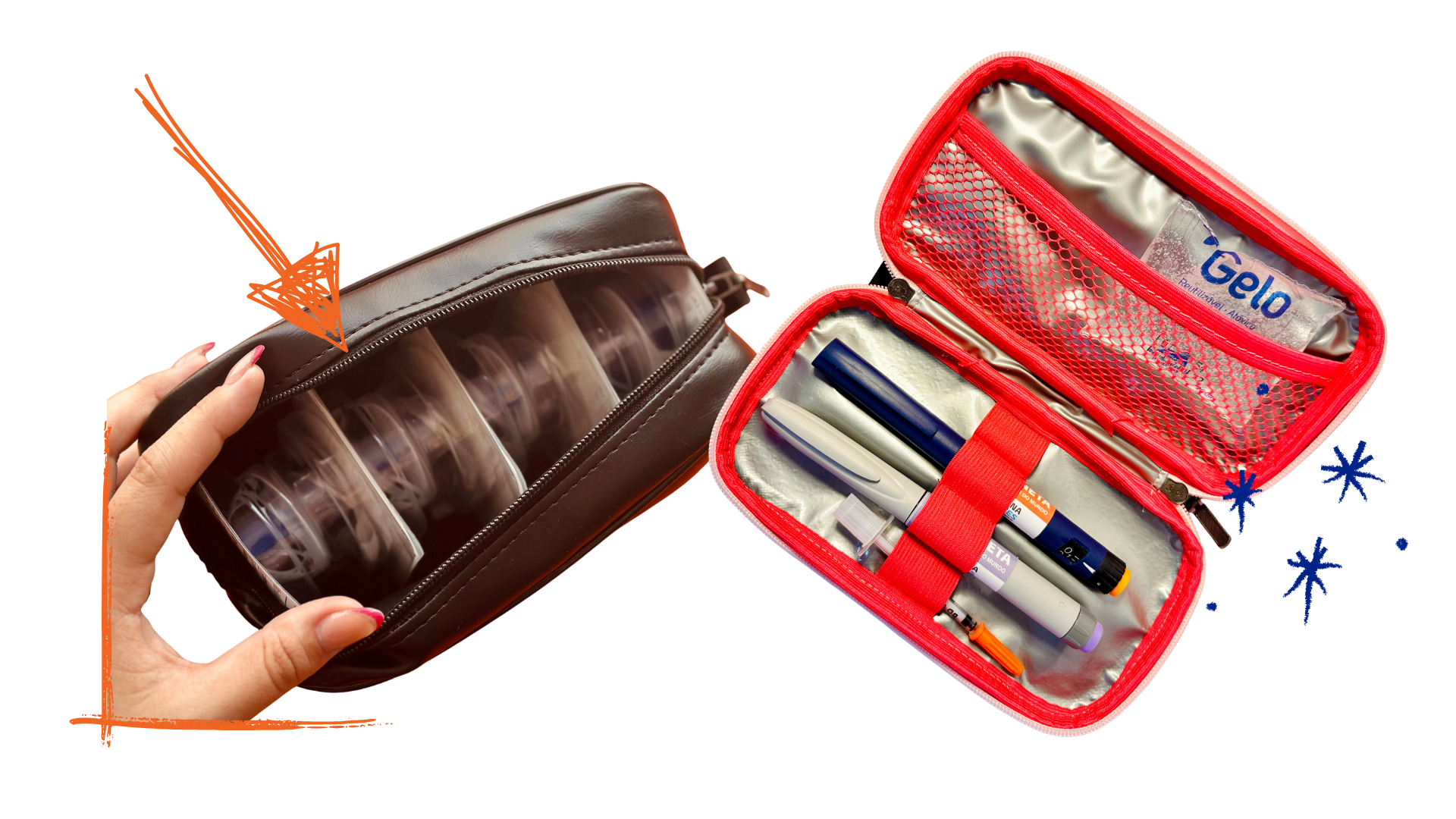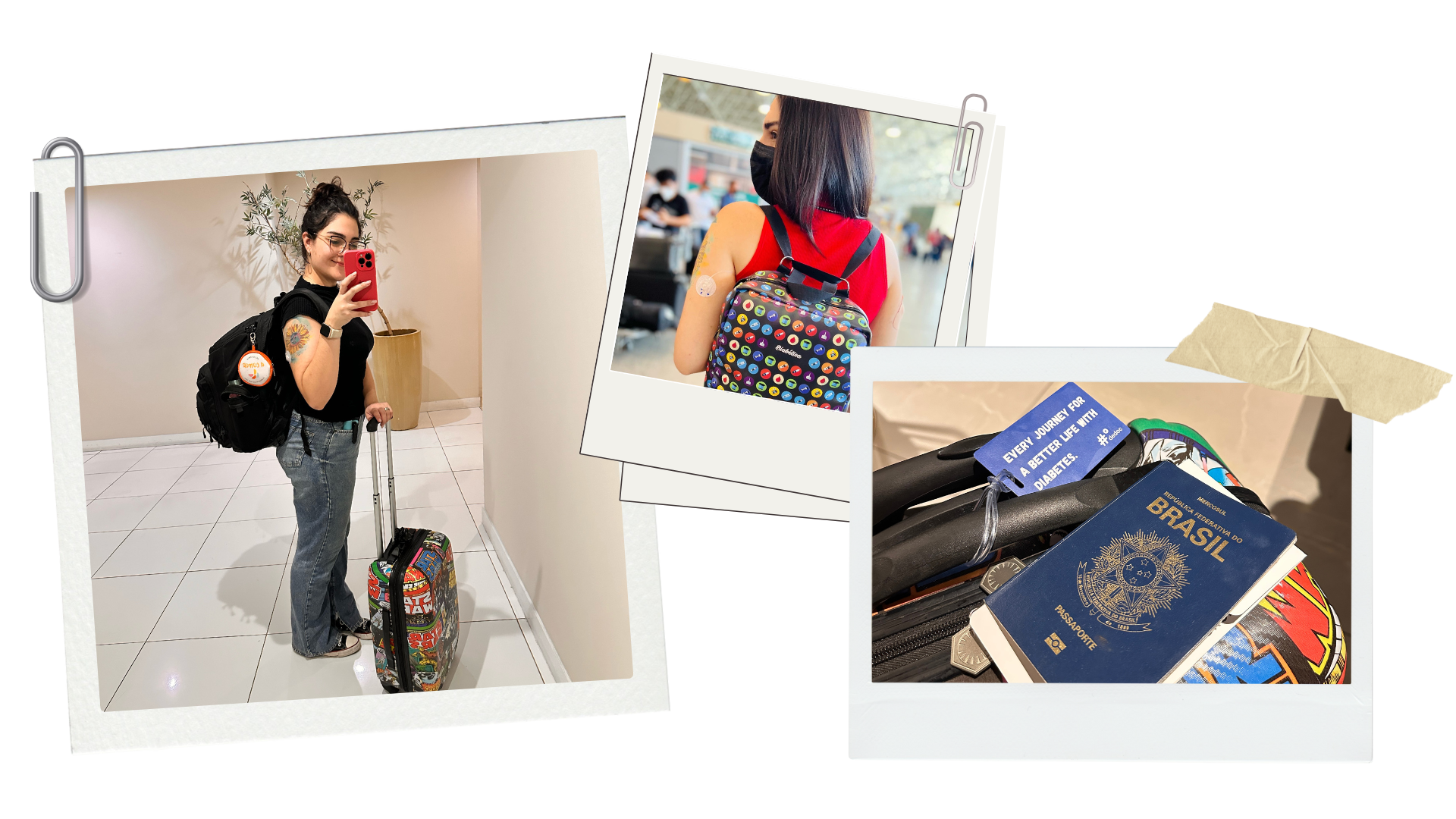How I Travel with Insulin: My Best Tips for Long Trips
Traveling with type 1 diabetes takes more than just packing a suitcase: it requires strategy, preparation, and a bit of creativity. Over the years I’ve learned how to build a solid routine to keep my insulin safe and my blood sugar levels stable, no matter how long or complicated the journey is. Whether you’re traveling for vacation, work, or family visits, here are the things I never forget to do before hitting the road or taking off. I hope it helps you.
I always carry my insulin in my hand luggage
This is my number one rule. No matter how short or long the flight is, I never check my insulin in. Everything always stays with me, in my carry-on bag. There are a few reasons for this.
First, checked luggage can get lost or delayed—and I definitely don’t want to risk being without insulin in a new place. Second, the cargo hold of planes isn’t temperature controlled in the same way the cabin is. Insulin is sensitive to extreme temperatures, and freezing or overheating can make it less effective or completely useless. Keeping it close gives me peace of mind, and it also means I can access it easily if I need to adjust doses or correct high blood sugar.
My insulated bag is my best friend when traveling
To protect my insulin from heat, I always travel with a small thermal bag specifically designed for medication. Inside, I place a couple of reusable ice packs that I’ve frozen ahead of time. These ice packs help maintain a stable, cool temperature for hours. On road trips, bus rides, or layovers, the bag stays right next to me—never in the trunk, never in the overhead compartment. I’ve even used it at the beach or during hikes, and it’s a game-changer. Investing in a high-quality thermal bag was one of the best decisions I made for my diabetes routine.
I always bring extra of everything, Especially insulin
One of the most important lessons I’ve learned is to always pack more insulin than you think you’ll need. If I’m going on a 7-day trip, I bring enough for 14 days. You never know what might happen—maybe you’ll need to take more insulin than usual because you’re eating out more, being less active, or dealing with jet lag. Maybe a vial breaks or leaks. Having a buffer means you’re prepared for the unexpected. It also gives me peace of mind: I don’t have to ration doses or worry about running out.
“On long flights or multiple connections, I ask the flight crew to store my insulin in their fridge”
When I know I’ll be in transit for many hours, especially with long-haul flights or multiple layovers, I politely ask the flight attendants if they can store my insulin in the airplane’s refrigerator. Most airlines are happy to help, especially when I explain that I need to keep the medication cool to preserve its effectiveness. The added bonus is that the ice packs I bring with me also stay frozen for longer when the insulin is chilled properly. On my most recent trip, I traveled for 36 hours straight across several flights, and thanks to this tip, my insulin arrived perfectly cold, and the ice packs were still frozen when I landed. It made the whole journey so much less stressful!
3 extra tips for traveling:
I never forget snacks for hypoglycemia:
Low blood sugar can happen anytime, especially during travel when routines are thrown off and meals are unpredictable. That’s why I always bring a stash of snacks that can quickly raise my blood sugar. My go-to options include individually wrapped candies, honey sticks, and juice boxes. I make sure to keep some in my backpack, some in my pocket, and even a few in my seat on the plane or bus. I also like to bring longer-lasting snacks like granola bars or nuts, just in case a meal is delayed. It’s all about being ready before you actually need it.
I always bring a doctor’s letter:
When traveling internationally, I like to carry a letter from my doctor that explains my medical condition and lists the supplies I use, such as insulin pens, syringes, lancets, and glucose sensors. While airport security is generally understanding, this document can help smooth things over if questions arise about what I’m carrying. I keep a printed version in English and, if I’m traveling to a country where English isn’t widely spoken, I try to get a translated version as well. It’s not something I’ve had to use often, but I’m always glad to have it, just in case.
And one more thing I’ve learned from the #dedocº voices exchanges:
If you’re traveling to meet other people with diabetes or attend events like conferences and advocacy gatherings, it’s even more important to bring extra insulin and supplies—not just for yourself, but in case someone from the community needs help or a quick exchange. Sometimes someone forgets a sensor, loses their needles, or needs a specific type of insulin pen. Being prepared can make a huge difference and helps strengthen the support network we build wherever we go. I’ve swapped sensor adhesives at the airport and shared micropore tape at a hotel—these moments show how, together, we truly take care of each other.
These small but powerful habits have made traveling with diabetes so much easier for me. Whether I’m exploring a new city, visiting family, or going on a work trip, I know I’ve got what I need to take care of myself. If you also live with diabetes, I’d love to hear what works for you. What’s the one travel tip you swear by? Let’s support each other and make life on the road a little smoother for everyone in our community!
Written by Beatriz Scher
#travelingwithdiabetes #dedocvoices #diabetestips #insulin


